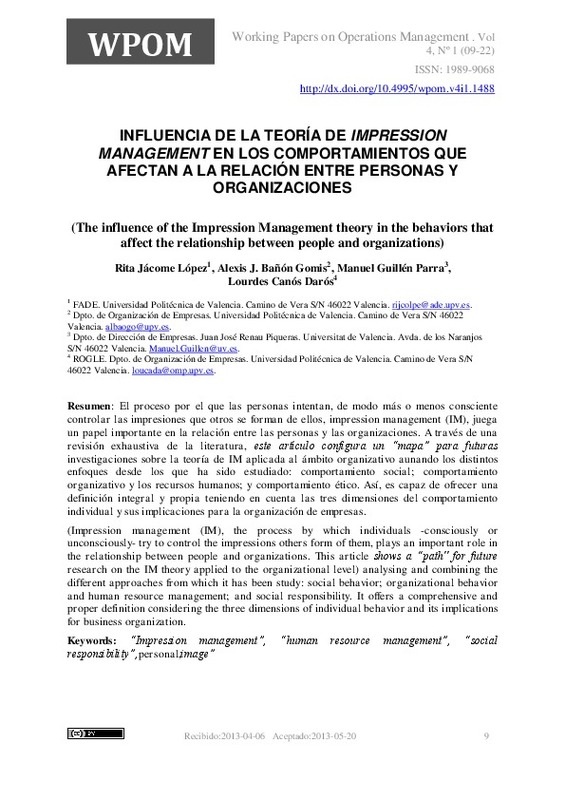JavaScript is disabled for your browser. Some features of this site may not work without it.
Buscar en RiuNet
Listar
Mi cuenta
Estadísticas
Ayuda RiuNet
Admin. UPV
Influencia de la teoría de Impression Management en los comportamientos que afectan a la relación entre personas y organizaciones
Mostrar el registro completo del ítem
Jácome López, R.; Bañón Gomis, AJ.; Guillen Parra, M.; Canós Darós, L. (2013). Influencia de la teoría de Impression Management en los comportamientos que afectan a la relación entre personas y organizaciones. Working Papers on Operations Management. 4(1):9-22. https://doi.org/10.4995/wpom.v4i1.1488
Por favor, use este identificador para citar o enlazar este ítem: http://hdl.handle.net/10251/32061
Ficheros en el ítem
Metadatos del ítem
| Título: | Influencia de la teoría de Impression Management en los comportamientos que afectan a la relación entre personas y organizaciones | |
| Otro titulo: |
|
|
| Autor: | Jácome López, Rita Guillen Parra, Manuel | |
| Entidad UPV: |
|
|
| Fecha difusión: |
|
|
| Resumen: |
[EN] Impression management (IM), the process by which individuals -consciously or unconsciously- try to control the impressions others form of them, plays an important role in the relationship between people and organizations. ...[+]
[ES] El proceso por el que las personas intentan, de modo más o menos consciente controlar las impresiones que otros se forman de ellos, impression management (IM), juega un papel importante en la relación entre las personas ...[+]
|
|
| Palabras clave: |
|
|
| Derechos de uso: | Reserva de todos los derechos | |
| Fuente: |
|
|
| DOI: |
|
|
| Editorial: |
|
|
| Versión del editor: | https://doi.org/10.4995/wpom.v4i1.1488 | |
| Código del Proyecto: |
|
|
| Agradecimientos: |
|
|
| Tipo: |
|









